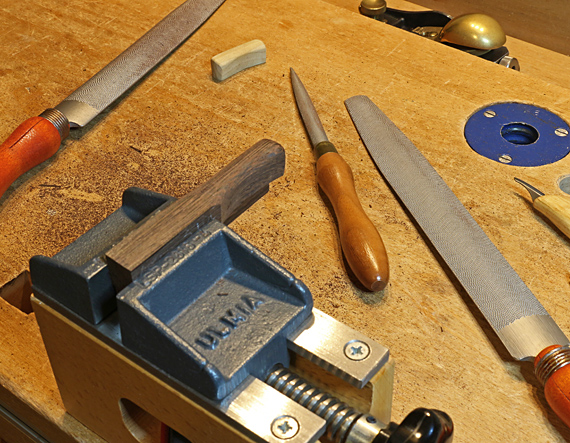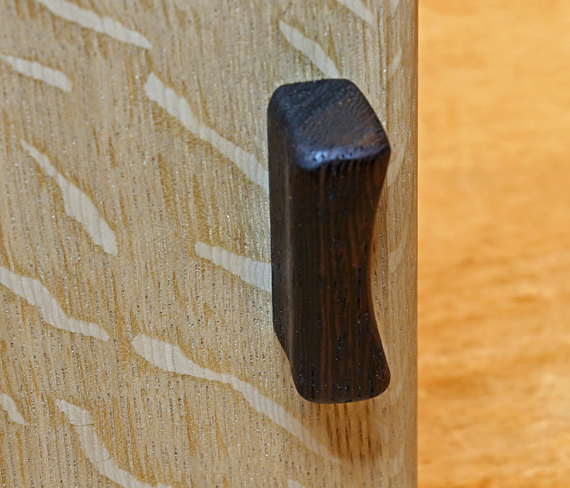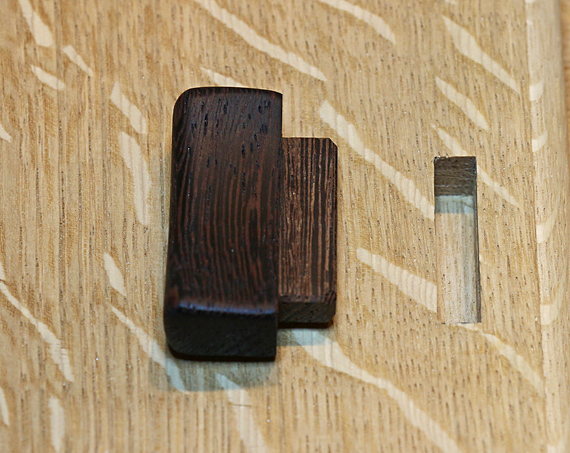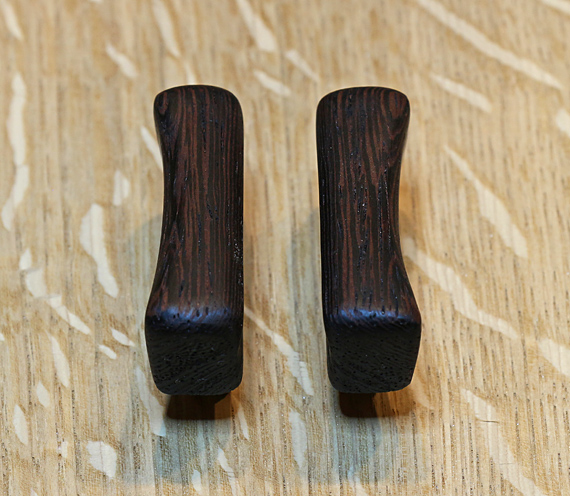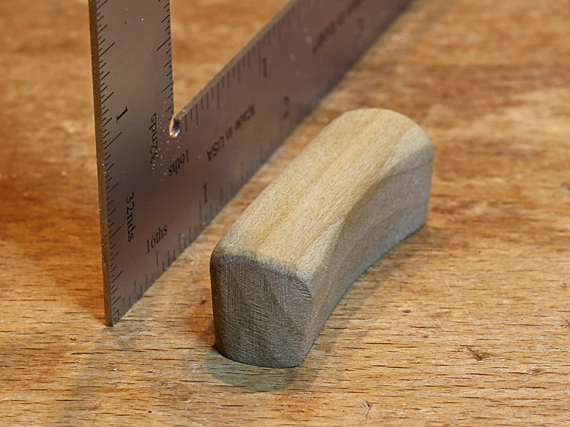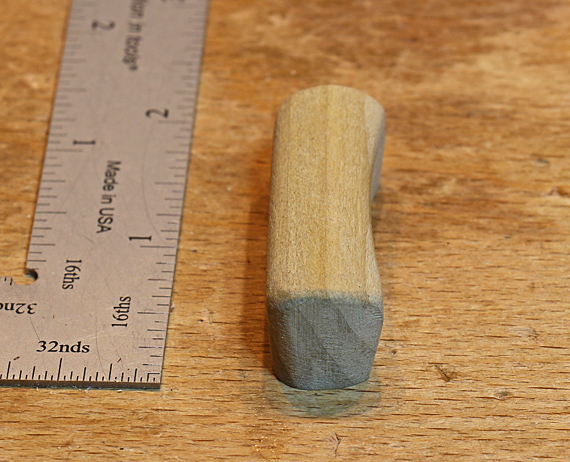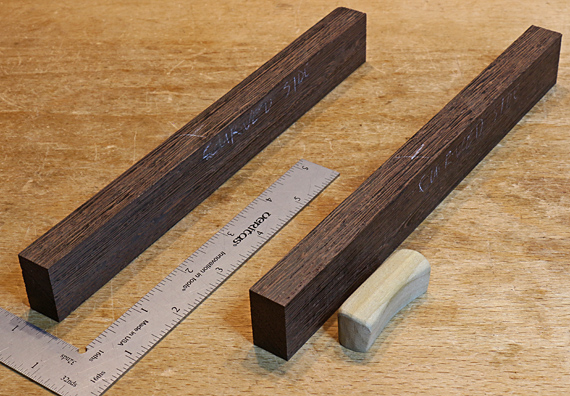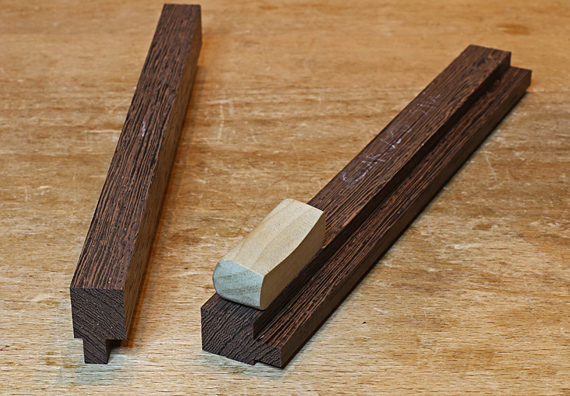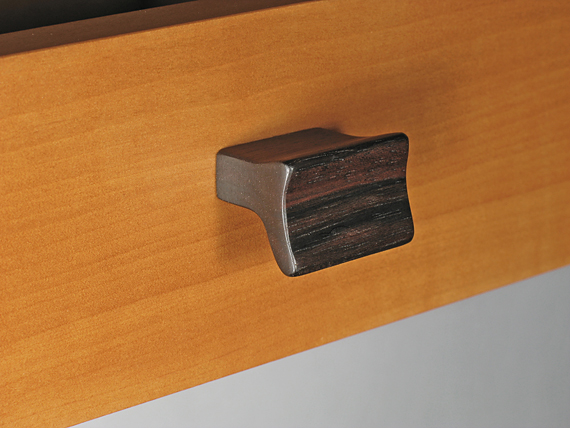
Here are some thoughts on handle design that I hope you will find useful for your work.
We experience several aspects of woodwork at once – design, spatial sense, texture, color, sound, smell, style reference, etc. A hand-friendly handle can be a significant addition.
Exotics such as the Macassar ebony, above, are my favorites for handles. They finish beautifully and wear well. Note the stand out from the surface of the piece. This avoids finger grime from building up on the surface of the woodwork.
I almost always want a shape that is directly consistent with the design of the piece. In fact, the curves and proportions of the piece tell me how to shape the handle. I rarely want to introduce a new theme in the handle, though that might work more often for designers more talented than I.
The cabinet handle below is shaped much like the cabinet itself. The hard edges on the top will not be grabbed but the hard edges on the sides have a nice feel, especially since the sides are undercut.
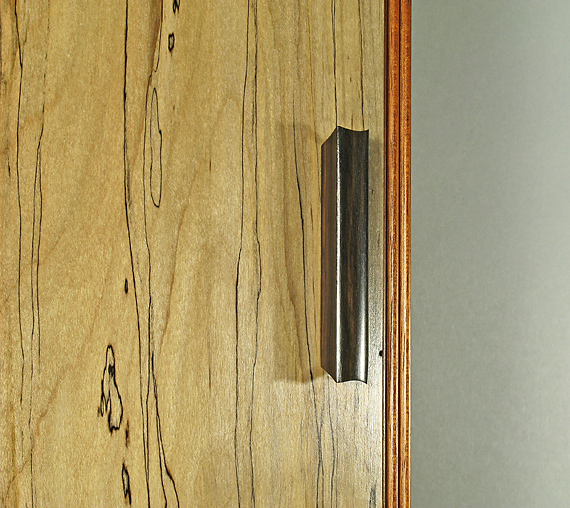
Below, the very simple small chest handle in wenge is in keeping with the simple design of the piece that relies mostly on the beauty of the wood, pleasing proportions, and the joinery for interest. The underside of the handle is slightly hollowed to make for a nice finger grab.
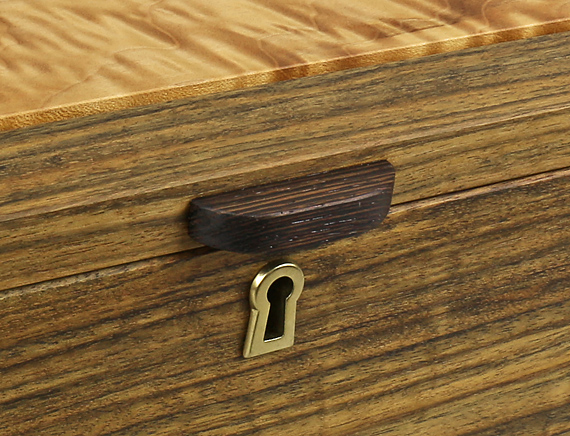
Below, this wall shelf with a side-hung drawer has so much going on with the wood species and figure, plus the undulating surface on the drawer front, that any further statement from the handle would be too much. The simple brass knob fits the bill.
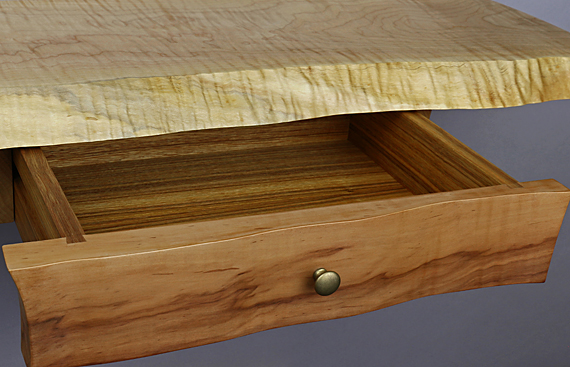
This drawer handle, below, in Honduras rosewood, borrowed shamelessly ripped off from a design by Michael Fortune, also fits with the gradual curves of the cabinet. (Hey, I did add the bowed front, which made it a lot more difficult to make.) Speaking of “borrowing,” I will be nothing but flattered if you borrow any of my designs shown here.
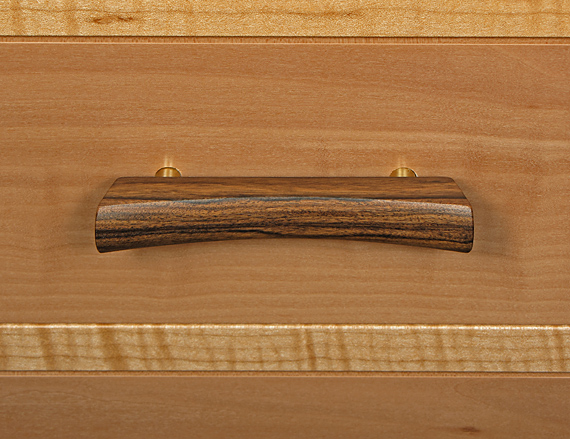
The length and bulk of the handles are graduated to be consistent with the graduation in drawer sizes. Yes, that took a lot more work.
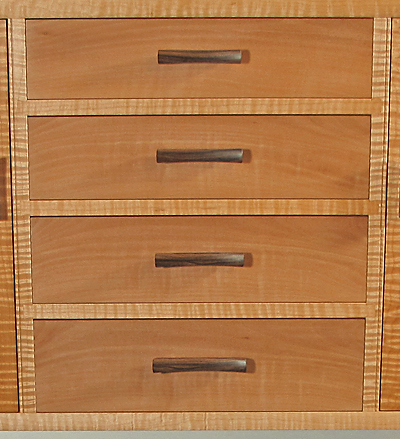
Lee Valley offers graduated-size metal handles in a variety of finishes.
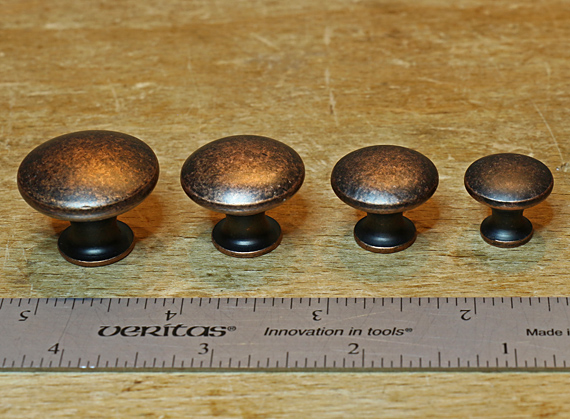
Finally, sometimes it is fun to introduce something different, such as these manufactured handles, which have been on my tool cabinet for a very long time.
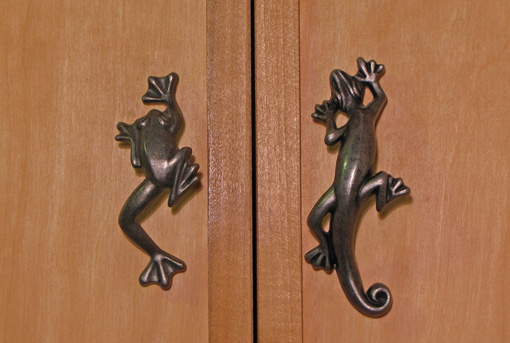
Give it a try – enjoy enhancing your work with custom handles. Keep in mind too, that thoughtfully selected manufactured handles also can go a long way to add to your woodwork.

